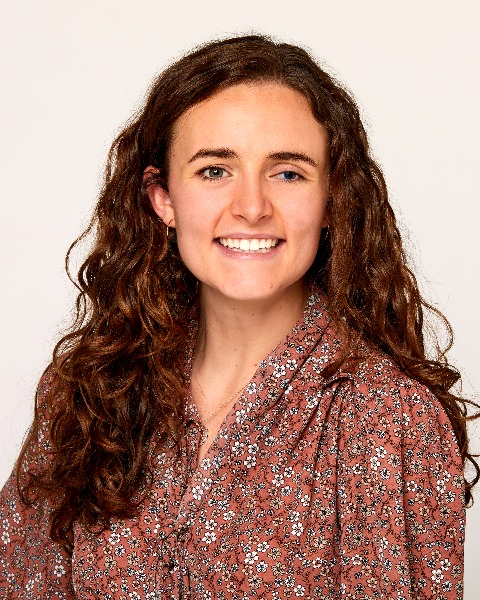Oral Abstract
Blood Center/Hospital-Based Donor Center - Blood Center/Donor Center Inventory Management
Oral Abstract Session - Application of Novel Technology in Transfusion Medicine
#OA2-AM25-MN-19 - Blood Resource Allocation in Oklahoma: A Geospatial Analysis on Available Blood Supply and Potential Networks of Distribution
Monday, October 27, 2025
2:30 PM - 3:30 PM PT
Room: SDCC 30AB

Samantha Little (she/her/hers)
Medical Student
Harvard Medical School, MassachusettsDisclosure information not submitted.
Presenting Author(s)
Background/Case Studies: Access to timely blood transfusions is critical for surgical, oncologic, and emergency care. Hemorrhage represents the leading cause of preventable mortality after trauma. In the US, geographic disparities in blood product availability (where local demand exceeds supply), threaten healthcare outcomes. Despite the importance of this issue, the magnitude of these deficiencies and opportunities for improving blood distribution remain poorly characterized. We examined the geographic distribution of blood products across Oklahoma (OK) hospitals in 2024. Additionally, we examined the capacity to mobilize emergency blood donors by mapping the distribution of O type donors across OK and their proximity to donation centers.
Study
Design/Methods: We obtained red blood cell (RBC) stocking levels at hospitals supplied by Our Blood Institute (OBI), and stratified rural and urban hospitals by having ≥ 8 O+/- units, as well as trauma level designation as a proxy for emergency transfusion capability. We assessed appropriate blood consignment by plotting RBC turnover, defined as annual RBC units transfused divided by baseline hospital stock, against each hospital’s distance to the nearest blood center. Data from Blood Centers of America (BCA) was used to assess blood donor characteristics. We then used Esri’s ArcGIS Pro to map the distribution of blood donors in OK and determine average donor driving times to fixed donation sites.
Results/Findings: Of the 95 hospitals supplied by OBI, 90 had associated trauma level designations provided by the OK State Department of Health, and thus were stratified. Twenty four (26.6%) hospitals met our proxy for emergency transfusion capabilities, of which 9 (10.0%) were rural, and 15 (16.6%) were urban. We observed a negative correlation between hospital distance to blood centers and RBC turnover (correlation coefficient [CC] = -0.345). In 2024, OK had 110,317 rural and 134,751 urban blood donors; 40.87% were O+ and 8.59% were O-. Geospatial analysis of blood donors showed that donors in urban regions drive an average of 35.99 minutes to fixed donation sites, while their rural counterparts drive an average of 64.07 minutes.
Conclusions: Significant geographic disparities in blood product accessibility threaten healthcare outcomes in rural OK. Rural blood product availability is limited, particularly in lower-level trauma centers lacking stock thresholds to perform emergency transfusions. A mass casualty incident could quickly overwhelm existing rural blood product stocks, leading to preventable morbidity and mortality. However, the presence of concentrated groups of healthy, available O-type donors in certain regions suggests that walking blood banks may serve as a viable, short-term solution in isolated rural areas. This approach could bridge critical supply gaps until more sustainable and permanent blood distribution networks are established.
Study
Design/Methods: We obtained red blood cell (RBC) stocking levels at hospitals supplied by Our Blood Institute (OBI), and stratified rural and urban hospitals by having ≥ 8 O+/- units, as well as trauma level designation as a proxy for emergency transfusion capability. We assessed appropriate blood consignment by plotting RBC turnover, defined as annual RBC units transfused divided by baseline hospital stock, against each hospital’s distance to the nearest blood center. Data from Blood Centers of America (BCA) was used to assess blood donor characteristics. We then used Esri’s ArcGIS Pro to map the distribution of blood donors in OK and determine average donor driving times to fixed donation sites.
Results/Findings: Of the 95 hospitals supplied by OBI, 90 had associated trauma level designations provided by the OK State Department of Health, and thus were stratified. Twenty four (26.6%) hospitals met our proxy for emergency transfusion capabilities, of which 9 (10.0%) were rural, and 15 (16.6%) were urban. We observed a negative correlation between hospital distance to blood centers and RBC turnover (correlation coefficient [CC] = -0.345). In 2024, OK had 110,317 rural and 134,751 urban blood donors; 40.87% were O+ and 8.59% were O-. Geospatial analysis of blood donors showed that donors in urban regions drive an average of 35.99 minutes to fixed donation sites, while their rural counterparts drive an average of 64.07 minutes.
Conclusions: Significant geographic disparities in blood product accessibility threaten healthcare outcomes in rural OK. Rural blood product availability is limited, particularly in lower-level trauma centers lacking stock thresholds to perform emergency transfusions. A mass casualty incident could quickly overwhelm existing rural blood product stocks, leading to preventable morbidity and mortality. However, the presence of concentrated groups of healthy, available O-type donors in certain regions suggests that walking blood banks may serve as a viable, short-term solution in isolated rural areas. This approach could bridge critical supply gaps until more sustainable and permanent blood distribution networks are established.

